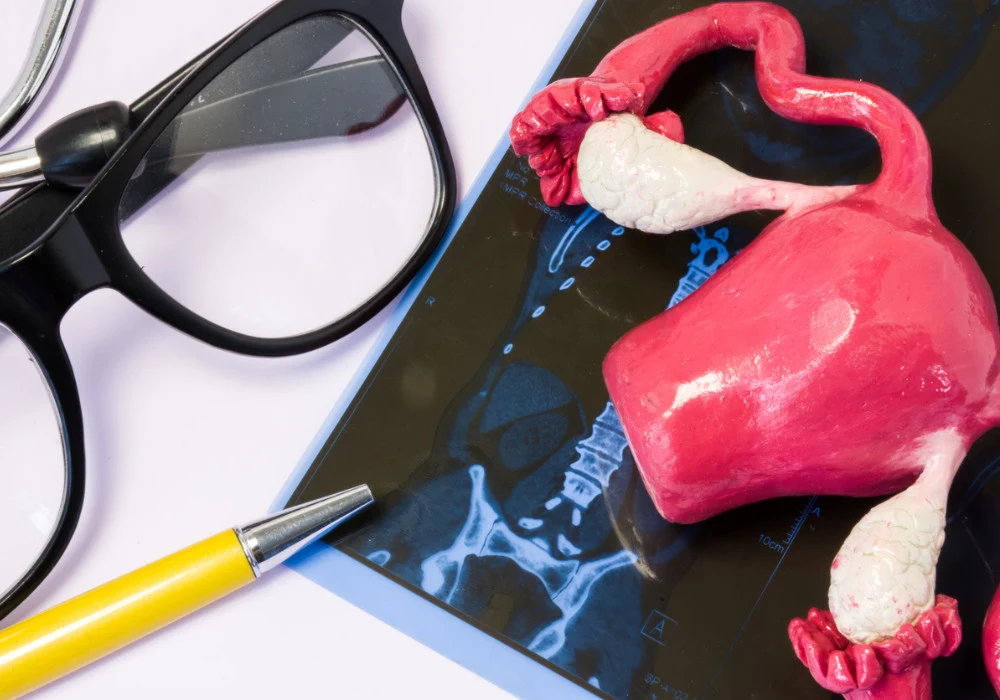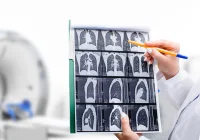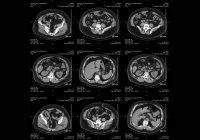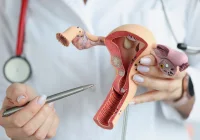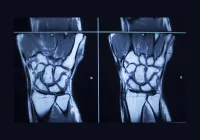The widespread use of pelvic MRI in gynaecological oncology has led to an increased detection of incidental findings—abnormalities unrelated to the primary clinical indication. These findings, although often benign, may pose diagnostic challenges and have significant clinical implications. As MRI protocols for staging and evaluation in gynaecological malignancies routinely include large field-of-view sequences, incidental extra-gynaecological findings are common. Adopting a compartment-based framework enhances radiologists' ability to systematically assess these findings and aids in distinguishing between benign and potentially malignant conditions.
Anterior and Lateral Compartments: Urinary and Vascular Anomalies
The anterior pelvic compartment can reveal a range of incidental findings involving the urinary system. Urinary stones, while typically diagnosed via CT, may appear on MRI as signal voids or filling defects in dilated ureters. Urachal cysts—remnants of embryological development—manifest as high-signal midline fluid lesions, sometimes accompanied by umbilical-urachal sinuses. Though mostly benign, prophylactic excision may be warranted due to the potential for malignancy. Another incidental lesion, urethral diverticulum, appears as a T2-bright lesion anterior to the vagina and may mimic prostatic anatomy in sagittal view. Nuck canal cysts, resulting from incomplete peritoneal obliteration, may present as elongated inguinal fluid collections.
Must Read: Radiation-Free MRI for Obstetric Pelvimetry
Malignant anterior findings include urachal carcinoma and bladder cancer. Urachal carcinoma typically shows irregular, enhancing masses with mucin content and peripheral calcifications. Bladder cancer, more frequent in elderly males, may present as lesions with disrupted muscle layer visibility on T2-weighted images and early enhancement.
The lateral compartment may reveal neurogenic or vascular anomalies. Schwannomas are well-defined masses with heterogeneous enhancement. Intravenous leiomyomatosis, although histologically benign, may exhibit extensive intravascular growth, appearing as elongated enhancing masses. Appendiceal mucocele, either neoplastic or non-neoplastic, typically presents as a tubular cystic structure in the right lower quadrant with variable T1 and high T2 signal, sometimes with a stratified “onion-skin” appearance. Pelvic congestion syndrome may also appear in this compartment, with MRI revealing enlarged tortuous pelvic veins and flow-related signal changes, especially in multiparous premenopausal women.
Posterior and Musculoskeletal Compartments: Gastrointestinal and Skeletal Findings
Incidental findings in the posterior compartment include a variety of gastrointestinal lesions. Peritoneal inclusion cysts, often related to prior surgery, are conforming, fluid-filled lesions with no post-contrast enhancement. Tailgut cysts, congenital lesions in the presacral space, display high T2 and variable T1 signal intensity depending on contents. They are often resected due to the risk of complications. Colonic diverticulosis and diverticulitis are common, particularly in the elderly, and present as bowel wall thickening with pericolonic inflammation. Complications such as fistulas may arise in advanced cases. Colorectal cancer must be distinguished from diverticulitis and inflammatory bowel disease, with MRI features including wall thickening, restricted diffusion and extramural extension. Additional posterior findings include perianal abscesses, best visualised with contrast and DWI, and gastrointestinal stromal tumours, which may demonstrate heterogeneous enhancement. Rarely, extramedullary haematopoiesis appears as soft tissue masses with variable signal and mild enhancement, requiring careful differentiation from malignancies.
Musculoskeletal incidental findings include bone lesions, sacroiliitis, stress fractures and iliopsoas bursitis. Bone-RADS guidelines assist in assessing lesion benignity based on T1 and T2 characteristics. Haemangiomas, enchondromas and osteochondromas can be identified based on signal patterns and enhancement features. Sacroiliitis is seen as subchondral bone marrow oedema on T2 or STIR sequences, and its identification requires clinical correlation. Stress fractures, particularly insufficiency types, are common in post-radiotherapy patients and exhibit bone marrow oedema with characteristic fracture lines. Distended iliopsoas bursae may appear as fluid-filled lesions, sometimes containing debris or gas, and require symptom correlation for management.
Miscellaneous Findings: Rare but Important Entities
The miscellaneous compartment includes rare but clinically relevant entities that may mimic malignant or inflammatory processes. Pelvic splenosis, often following trauma or splenectomy, manifests as multiple nodules with imaging characteristics similar to normal splenic tissue. It is generally benign but can be mistaken for metastatic disease. Epiploic appendagitis, caused by torsion or infarction of epiploic appendages, presents with acute pain and appears as fatty lesions with peripheral inflammation on MRI. It is usually self-limiting. Among mesenchymal tumours, lipomas are the most frequent, presenting as homogeneous fat-containing lesions with well-defined margins. Desmoid tumours, often linked to prior surgery, are solid intramuscular lesions with variable signal and enhancement, potentially infiltrative. Aggressive angiomyxomas, typically seen in middle-aged women, are laminated, T2-hyperintense lesions with strong enhancement, often involving multiple compartments and necessitating careful surgical planning.
Incidental extra-gynaecological findings on female pelvic MRI are common and span a wide spectrum of pathologies. Radiologists must remain vigilant and systematic in evaluating all anatomical compartments—anterior, lateral, posterior, musculoskeletal and miscellaneous. This compartment-based approach enhances diagnostic accuracy, supports timely intervention when necessary and minimises the risk of missed or misinterpreted lesions. With growing importance of MRI scanning in the assessment of gynaecological malignancies, recognising and appropriately managing incidental findings will be essential to comprehensive patient care.
Source: Insights into Imaging
Image Credit: iStock





